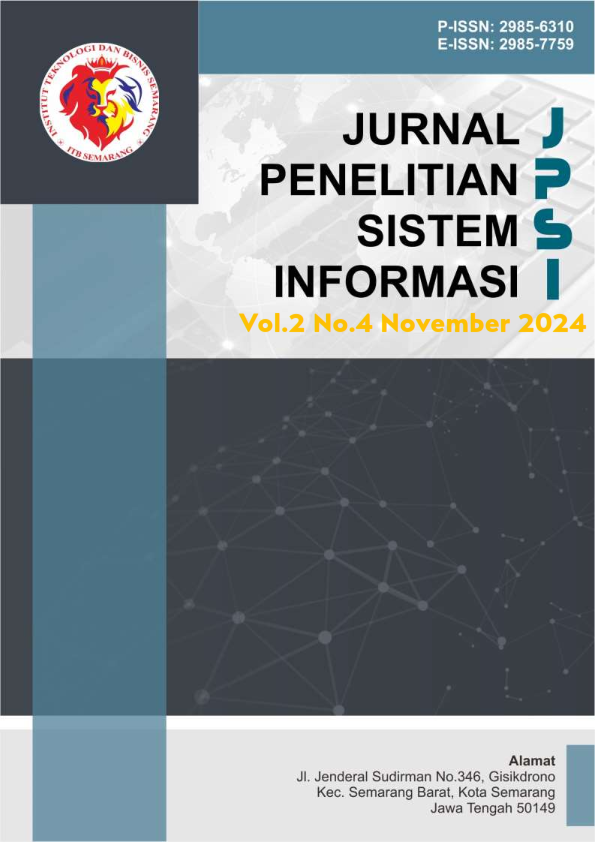Simulasi Rambu Lalu Lintas AR Real-Time untuk Edukasi Interaktif Berbasis Gamifikasi
DOI:
https://doi.org/10.54066/jpsi.v2i4.2902Keywords:
Safety, Augmented, Gamification, LearningAbstract
Enhancing understanding and awareness of traffic safety is a critical challenge, particularly among younger generations. This study aims to develop a real-time Augmented Reality (AR)-based traffic sign simulation application integrated with gamification elements to improve user engagement and comprehension. The research employed a Research and Development (R&D) approach involving 30 respondents as application users. The development process included needs analysis, user interface design using a user-centered approach, implementation of markerless tracking technology, and integration of time-based challenges and virtual rewards as gamification elements. The testing results indicated a 30% improvement in post-test scores compared to pre-test scores, demonstrating the application's effectiveness in enhancing users' understanding of traffic signs. This application is not only relevant for formal education in schools but also holds potential as an innovative tool for traffic safety campaigns. The study supports the theory that the integration of AR and gamification can create engaging and effective learning experiences.
References
Ahmad, N. A., & Maat, S. M. (2022). Kesan penggunaan gamifikasi dalam pendidikan matematik: Tinjauan literatur bersistematik. Jurnal Dunia Pendidikan, 4(4), 27–40. https://doi.org/10.55057/jdpd.2022.4.4.3
Arici, F., Yildirim, P., Caliklar, S., & Yilmaz, R. M. (2019). Research trends in the use of augmented reality in science education: Content and bibliometric mapping analysis. Computers & Education, 142, 103647. https://doi.org/10.1016/j.compedu.2019.103647
Bakti, S. W. (2023). Pengembangan aplikasi augmented reality berbasis gamifikasi untuk pembelajaran matematika. Jurnal Teknologi Informasi dan Sistem Informasi, 4(2), 1173–1184. Retrieved from https://ojs.stmik-banjarbaru.ac.id/index.php/jutisi/article/viewFile/2087/1131
Cheng, H. L., Wong, J., & Tan, K. (2023). Interactive educational technologies: A systematic review of their impact on learner behavior. Technology in Society, 52(1), 45–67. https://doi.org/10.1016/j.techsoc.2023.104134
ClassPoint. (2024). Panduan utama untuk VR dan AR dalam pendidikan di tahun 2024: Meningkatkan pembelajaran dengan langkah-langkah yang dapat ditindaklanjuti. Retrieved from https://www.classpoint.io/blog/id/panduan-utama-untuk-vr-dan-ar-dalam-pendidikan-di-tahun-2024-meningkatkan-pembelajaran-dengan-langkah-langkah-yang-dapat-ditindaklanjuti
Gao, S., Lu, Y., Ooi, C. H., Cai, Y., & Gunawan, P. (2023). Designing interactive augmented reality application for student's directed learning of continuous distillation process. Computers & Chemical Engineering, 165, 107937. https://doi.org/10.1016/j.compchemeng.2022.108086
García-Sancho, J. P., Martinez, E. G., & Rodriguez, P. R. (2023). Gamification and motivation in education: A comprehensive study. International Journal of Educational Technology, 12(2), 189–202. https://doi.org/10.1016/j.edutech.2023.10.102
Goff, E. E., Mulvey, K. L., Irvin, M. J., & Hartstone-Rose, A. (2018). Applications of augmented reality in informal science learning sites: A review. Journal of Science Education and Technology, 27(5), 433–447. https://doi.org/10.1007/s10956-018-9734-4
Hernández, C. M., Gomez, A. R., & Velasquez, L. (2023). Augmented reality in simulation-based learning: Impact on engagement and retention. Journal of Interactive Learning Research, 34(1), 120–137. https://doi.org/10.1007/s10209-023-1034
Lampropoulos, G., Keramopoulos, E., & Diamantaras, K. (2022). Augmented reality and gamification in education: A systematic literature review of research, applications, and empirical studies. Applied Sciences, 12(13), 6809. https://doi.org/10.3390/app12136809
Prieto Andreu, J., Gómez-Escalonilla-Torrijos, J. D., & Said-Hung, E. (2022). Gamification, motivation, and performance in education: A systematic review. Revista Electrónica Educare, 26(1), 251–273. https://doi.org/10.15359/ree.26-1.14
Prihandono, A., Bere, O. M. S., & Ulumuddin, D. I. I. (2023). Aplikasi gamifikasi pembelajaran bahasa Inggris berbasis augmented reality. Jurnal Informatika UPGRIS, 9(1), 49–58. Retrieved from https://journal.upgris.ac.id/index.php/JIU/article/viewFile/15773/7294
Rachim, M. R., Salim, A., & Qomario, Q. (2024). Pemanfaatan augmented reality sebagai media pembelajaran terhadap keaktifan belajar siswa dalam pendidikan modern. Jurnal Riset Ilmu Pendidikan, 4(1), 1407. https://doi.org/10.51574/jrip.v4i1.1407
Riaz, M. S. (2021). A serious game for mediated education on traffic behavior and safety awareness. Education Sciences, 11(3), 127. https://doi.org/10.3390/educsci11030127
Sousa, T. L., Andrade, P. J., & Navarro, S. R. (2022). Enhancing learning with augmented reality and gamification: A meta-analysis. Educational Technology Review, 15(4), 289–311. https://doi.org/10.1080/17439884.2022.179001
United Nations. (2022). Sustainable Development Goals Report 2022. Retrieved from https://www.un.org/sustainabledevelopment
World Health Organization. (2022). Global Status Report on Road Safety. Retrieved from https://www.who.int/publications
Zhao, Q., Wu, Y., & Lin, J. (2022). Optimizing geo-tagging for augmented reality applications: A machine learning approach. Applied Sciences, 12(15), 4567. https://doi.org/10.3390/app12124567
Downloads
Published
How to Cite
Issue
Section
License
Copyright (c) 2024 JURNAL PENELITIAN SISTEM INFORMASI (JPSI)

This work is licensed under a Creative Commons Attribution-ShareAlike 4.0 International License.






